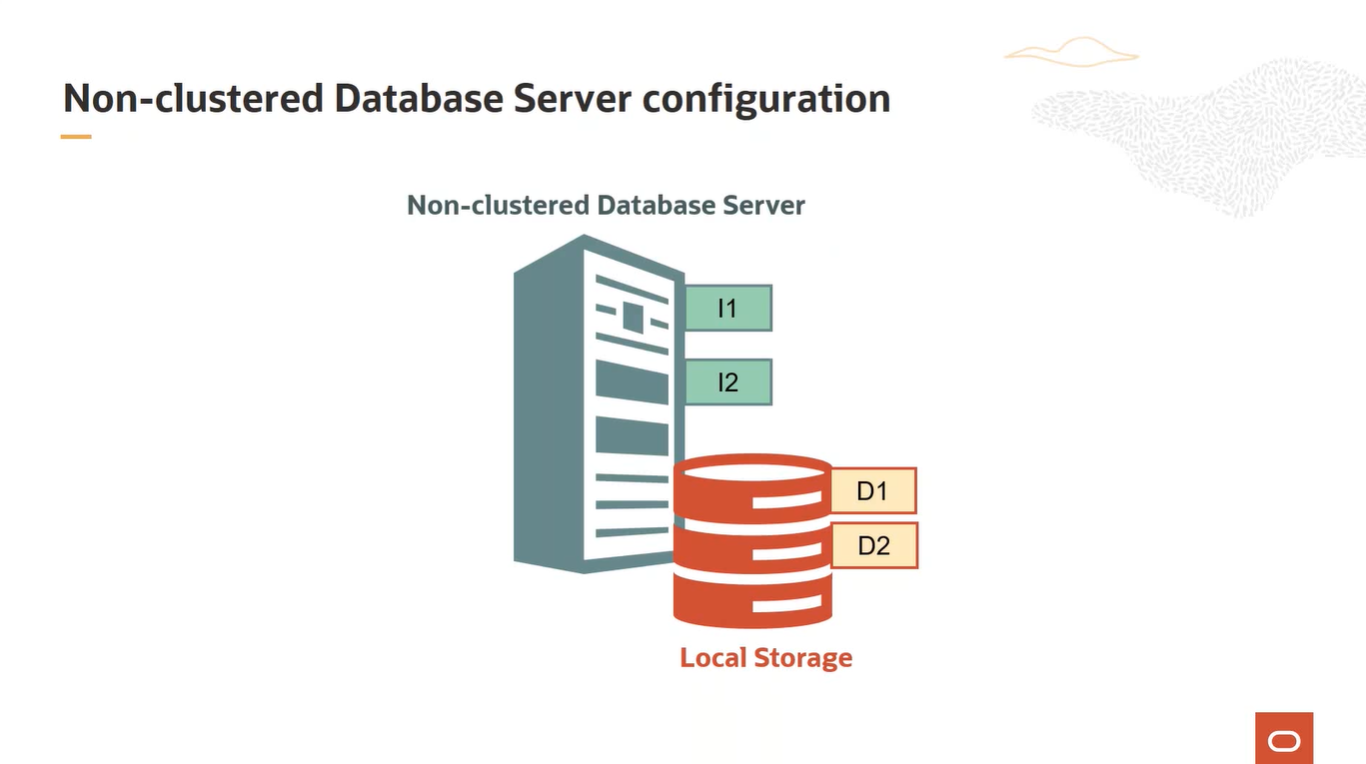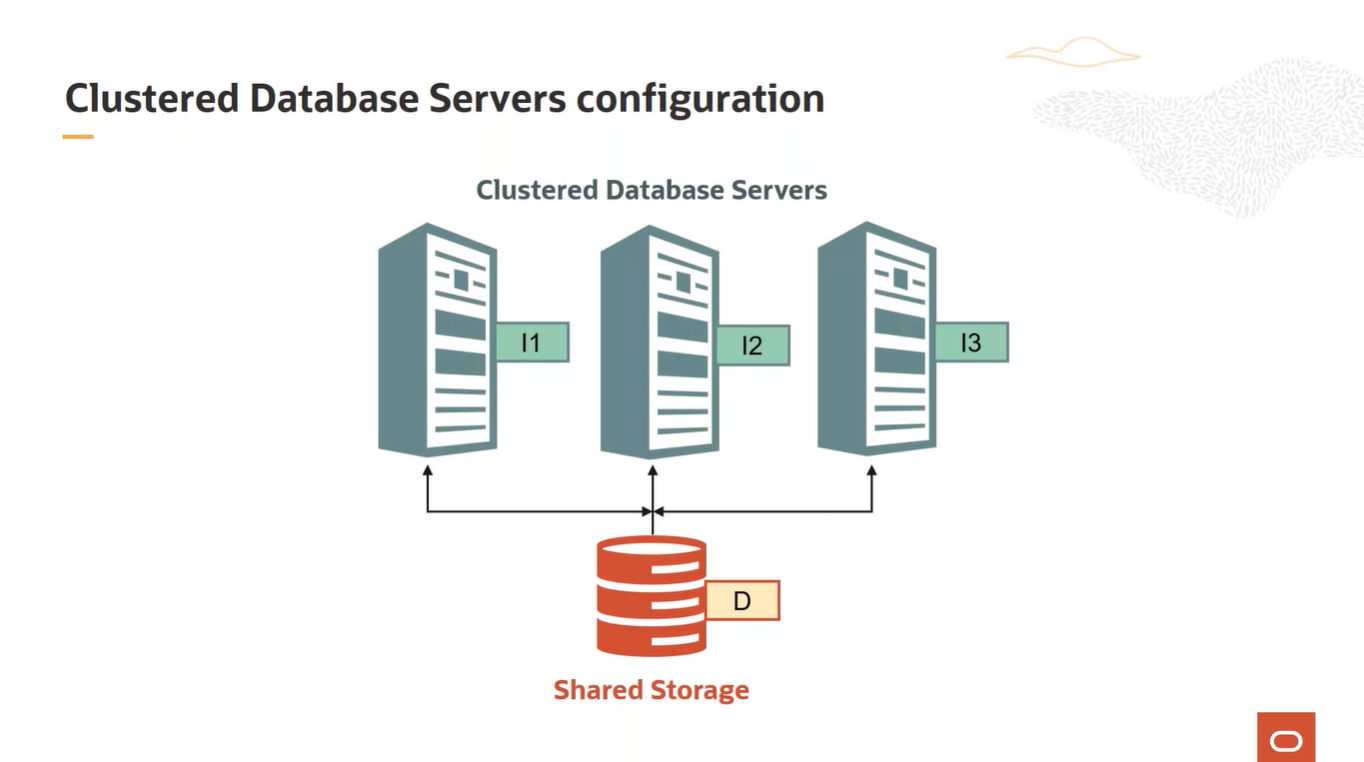
Welcome to the next topic on . In this topic, I will describe various Oracle Database Server configuration types. There are two types of Oracle Database Server configurations, non-clustered database server configuration and clustered database servers configuration.

In a nonclustered database server configuration, each database instance is associated with only one container database. Data files are stored on local storage. If there are multiple container databases on the same server in a nonclustered configuration, then there is a separate and distinct database instance for each container database. Failure of that server will inevitably lead to loss of all instances for each container database. This makes this database server a single point of failure.
In a clustered database servers configuration, each database usually has multiple instances on separate servers for the same shared database. Data files are stored on shared storage. Oracle Real Application Cluster Database is an example for a cluster system that combines the processing power of multiple interconnected computers to provide system redundancy, scalability, and high availability.
Oracle Real Application Cluster provides customers with the highest database availability by removing individual database servers as single point of failure. In a clustered server environment, the database itself is shared across a pool of servers, which means that if any server in the server pool fails, the database continues to run on surviving servers. Oracle Real Application Cluster not only enables customers to continue processing database workloads in the event of a single server
Failure. It also helps to further reduce cause of downtime by reducing amount of time databases are taken offline for planned maintenance operations. Most planned maintenance operations in Real Application clustered databases can be performed in a rolling fashion, one database server at a time, leaving some of the instances available at any point in time. This concludes the topic on Oracle Database Server configurations.

